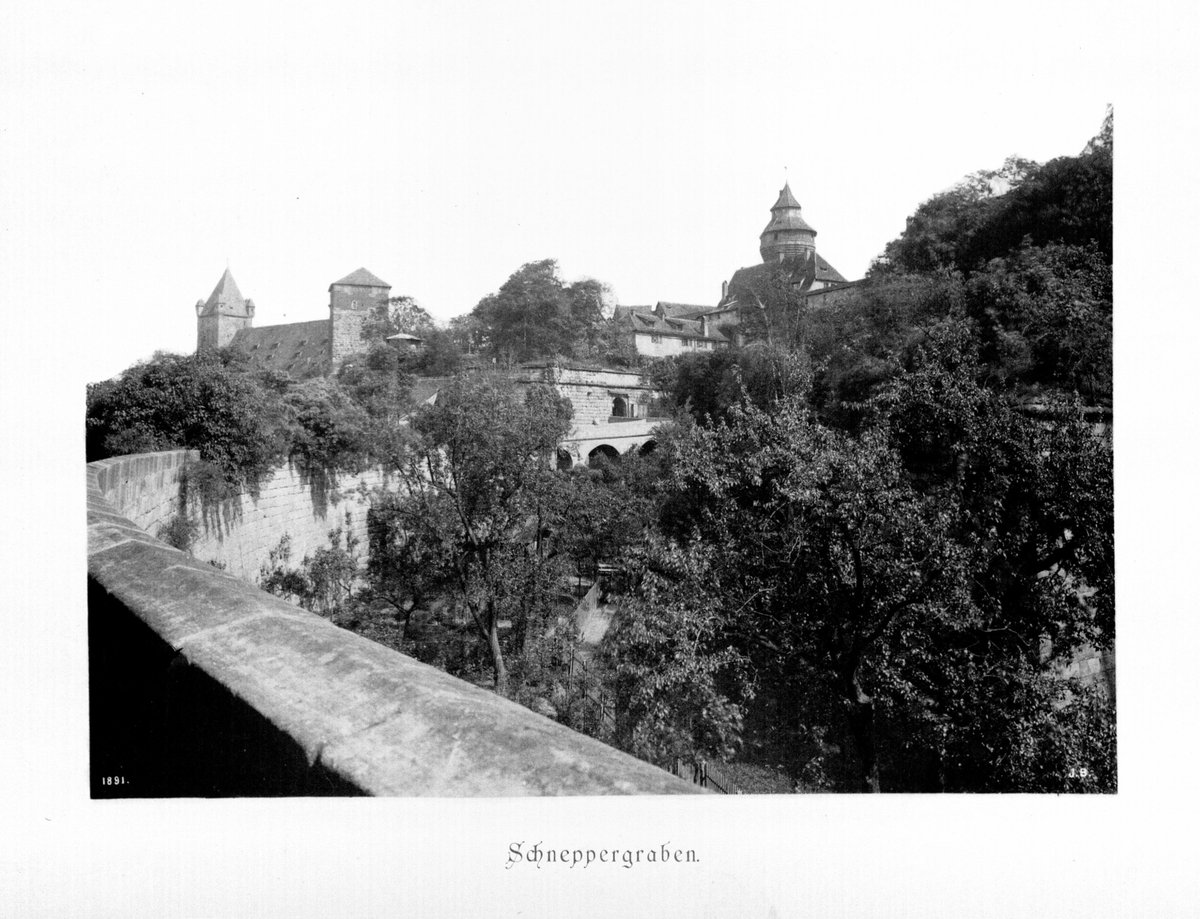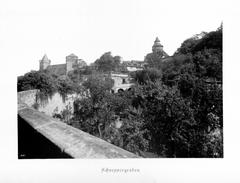
Nuremberg Castle Visiting Hours, Tickets, and Historical Sites Guide
Date: 14/06/2025
Introduction: Nuremberg Castle’s Enduring Legacy
Nuremberg Castle (Kaiserburg Nürnberg) is one of the most significant and best-preserved medieval fortresses in Europe. Towering above the city’s historic Old Town on a sandstone ridge, its storied past stretches back to at least 1050 CE, with archaeological evidence of earlier fortifications. For centuries, it stood as a vital stronghold of the Holy Roman Empire, serving as an imperial residence and political center. The castle’s commanding presence, diverse architectural styles, and pivotal role in European history make it a must-visit site for travelers, history enthusiasts, and architecture lovers alike (wheregoesrose.com; historycurator.com).
Over the centuries, Nuremberg Castle evolved architecturally, featuring Romanesque, Gothic, and Renaissance elements. Notable highlights include the Sinwell Tower with its sweeping city views, the impressively engineered Deep Well, and the unique Double Chapel that illustrates the religious hierarchy of the imperial court (travelawaits.com; MyGermanCity). Despite enduring severe damage during World War II, the castle has been meticulously restored, blending historical authenticity with modern conservation. Today, it houses museums, hosts cultural events, and offers guided tours, providing visitors with a comprehensive glimpse into its imperial past (HistoryHit; TravelWithKinsley).
This detailed guide covers everything you need to know for your visit—from history and architecture to practical information on tickets, visiting hours, accessibility, and nearby attractions. Explore the imperial grandeur, panoramic vistas, and rich cultural tapestry that make Nuremberg Castle an essential destination within Germany’s historical landscape.
Table of Contents
- Historical Overview: Origins and Imperial Role
- Architectural Highlights and Restoration
- Visitor Information: Hours, Tickets, and Accessibility
- What to See: Museums, Towers, and Gardens
- Nearby Attractions and Practical Tips
- Frequently Asked Questions (FAQ)
- Summary Table: Key Highlights
- Sources and Further Information
Historical Overview: Origins and Imperial Role
Early Origins and Development
First mentioned in records from 1050 CE, Nuremberg Castle’s strategic location made it a central seat of power within the Holy Roman Empire. Archaeological finds suggest even earlier fortifications on the same site (wheregoesrose.com). From the 11th to the 16th centuries, the castle was a core imperial residence, hosting emperors for governance, ceremonies, and the Imperial Diet. The Golden Bull of 1356, issued by Emperor Charles IV, decreed that new emperors must hold their first Diet here, cementing the castle’s political significance (historycurator.com).
Role in the Holy Roman Empire
Unlike monarchies with fixed capitals, Holy Roman Emperors traveled between palaces. Nuremberg Castle stood out as a primary residence and ceremonial venue. Its continuous imperial use helped define Nuremberg as a “Free Imperial City,” a status celebrated to this day (HistoryHit; Facts.net).
Architectural Highlights and Restoration
Architectural Composition and Features
Nuremberg Castle is a sprawling complex, comprising:
- Imperial Palace (Kaiserburg): The main residential and ceremonial building, blending military strength with palace elegance (MyGermanCity).
- Burgraves’ Castle: Partly ruined, once the seat of local rulers.
- Double Chapel (Doppelkapelle): An 11th-century Romanesque chapel with two levels for the emperor and his court.
- Sinwell Tower: A 13th-century cylindrical tower offering panoramic views (Medieval Chronicles).
- Deep Well (Tiefer Brunnen): Over 50 meters deep, a marvel of medieval engineering (TravelWithKinsley).
These structures reflect Romanesque, Gothic, and Renaissance influences, with ornate carvings and vaulted ceilings.
Restoration and Modern Use
Following devastating WWII bombings, the castle underwent decades of careful restoration, preserving its historical character while adding modern reinforcements. Today, it hosts exhibitions, cultural events, and educational programs, ensuring its continued relevance and accessibility (HistoryHit; TravelWithKinsley).
Visitor Information: Hours, Tickets, and Accessibility
Opening Hours
- April to October: 9:00 AM – 6:00 PM
- November to March: 10:00 AM – 4:00 PM
- Last Admission: 30–60 minutes before closing
- Closed: January 1, Shrove Tuesday, December 24, 25, and 31
- Gardens: April to October, 8:00 AM to dusk (no later than 8:00 PM); closed November to March (Kaiserburg Nürnberg official site).
Tickets and Prices
- Full Castle Ticket: €9.00 (includes Palas, museum, chapel, Sinwell Tower, and Deep Well tour)
- Reduced Ticket: €8.00 (students, seniors)
- Partial Tickets: Available for specific areas
- Children under 18: Free
- Gardens: Free entry
- Tickets can be purchased at the entrance or online (official website).
Accessibility
- The castle is partially accessible; some areas require navigating stairs and uneven surfaces.
- Main exhibition areas and gardens are more accessible.
- Special programs are available for visitors with hearing, visual, or cognitive impairments (Museen in Bayern).
Language Support
- Audio guides are available in English and other languages for a small fee (Next Level of Travel).
- Staff are available to assist visitors.
Facilities
- Restrooms, café, gift shop, and lockers are available.
- Photography is generally permitted, with restrictions on flash and tripods.
What to See: Museums, Towers, and Gardens
Imperial Castle Museum
Located in the Palas, the museum houses medieval weaponry, armor, imperial regalia replicas, and archaeological finds. Interactive displays and temporary exhibitions offer further insights (Museen in Bayern).
Sinwell Tower
Climb the Sinwell Tower for 360-degree city views and exhibitions on the castle’s wartime damage and restoration. Archival photos highlight Nuremberg’s resilience.
Deep Well (Tiefer Brunnen)
Join the guided tour to witness the 50-meter-deep medieval well, a testament to the castle’s engineering.
Castle Gardens
Free and open April to October, the gardens offer scenic relaxation and panoramic city vistas.
Art Bunker Tour
Venture beneath the city to the Kunstbunker, where artworks were protected during WWII. Guided tours are available in English and German (historycurator.com).
Castle Courtyards
Freely accessible and perfect for appreciating the castle’s architecture and historic ambiance.
Nearby Attractions and Practical Tips
Nearby Attractions
- Nuremberg Old Town: Explore cobbled streets, half-timbered houses, and the Hauptmarkt.
- Albrecht Dürer’s House: A museum dedicated to the famed Renaissance artist.
- German National Museum: Germany’s largest museum of cultural history.
- Nuremberg Toy Museum: Highlights the city’s toy-making heritage.
Practical Tips
- Arrive early to avoid crowds, especially for the Sinwell Tower and Deep Well tours.
- Wear comfortable shoes for cobblestone paths and stairs.
- Dress in layers; Nuremberg’s weather can change quickly.
- Combine your visit with local cuisine at nearby Old Town restaurants.
- Check for seasonal events like concerts, medieval festivals, or the Christmas Market.
Frequently Asked Questions (FAQ)
Q: What are the opening hours of Nuremberg Castle?
A: April–October: 9:00 AM–6:00 PM; November–March: 10:00 AM–4:00 PM. Check the official website for updates.
Q: How much do tickets cost?
A: Full ticket €9, reduced €8, children under 18 free.
Q: Is the castle accessible for people with disabilities?
A: Some areas are accessible; others involve stairs. Details are on the official site.
Q: Are guided tours available?
A: Yes, including tours of the Deep Well and secret tunnels.
Q: Can I bring my dog?
A: Dogs are allowed in the courtyard on a leash.
Summary Table: Key Highlights
| Feature | Description | Access/Notes |
|---|---|---|
| Imperial Palace | Restored halls, historic chapel | Included with ticket |
| Museum | Medieval artifacts and interactive exhibits | Included with ticket |
| Sinwell Tower | 360° city views, restoration exhibit | Included with ticket, stairs required |
| Deep Well | 50m deep, guided tour only | Guided tour included in full ticket |
| Gardens & Courtyards | Free access, scenic relaxation | Open April–October, free |
| Art Bunker | WWII artifact shelter, guided tours | Separate tour, advance booking recommended |
| Accessibility | Partial, check official website | Some areas not accessible |
| Amenities | Café, restrooms, gift shop | On site |
Sources and Further Information
- Nuremberg Castle: Visiting Hours, Tickets, and Historical Highlights of Nuremberg’s Iconic Fortress, 2024, Where Goes Rose (wheregoesrose.com)
- Nuremberg Castle Visiting Hours, Tickets, and Architectural Significance: A Complete Guide for Visitors, 2024, EAA and TravelWithKinsley (e-a-a.com)
- Ultimate Guide to Visiting Nuremberg Castle: Hours, Tickets & Historical Highlights, 2024, Kaiserburg Nürnberg Official Site (kaiserburg-nuernberg.de)
- Nuremberg Castle Visiting Hours, Tickets, and Highlights: Your Ultimate Guide, 2024, HistoryHit and HappyToWander (historyhit.com)
- Travel Tips and Visitor Experiences, 2024, Framey.io and Next Level of Travel (framey.io)
Plan Your Visit
Nuremberg Castle is a testament to centuries of imperial history, architectural brilliance, and cultural resilience. Plan ahead by checking current hours and ticket options on the official website, and consider guided tours or audio guides for a richer experience. Whether you’re admiring the city from Sinwell Tower or exploring the castle’s museums, your journey through medieval Europe begins here.
















































